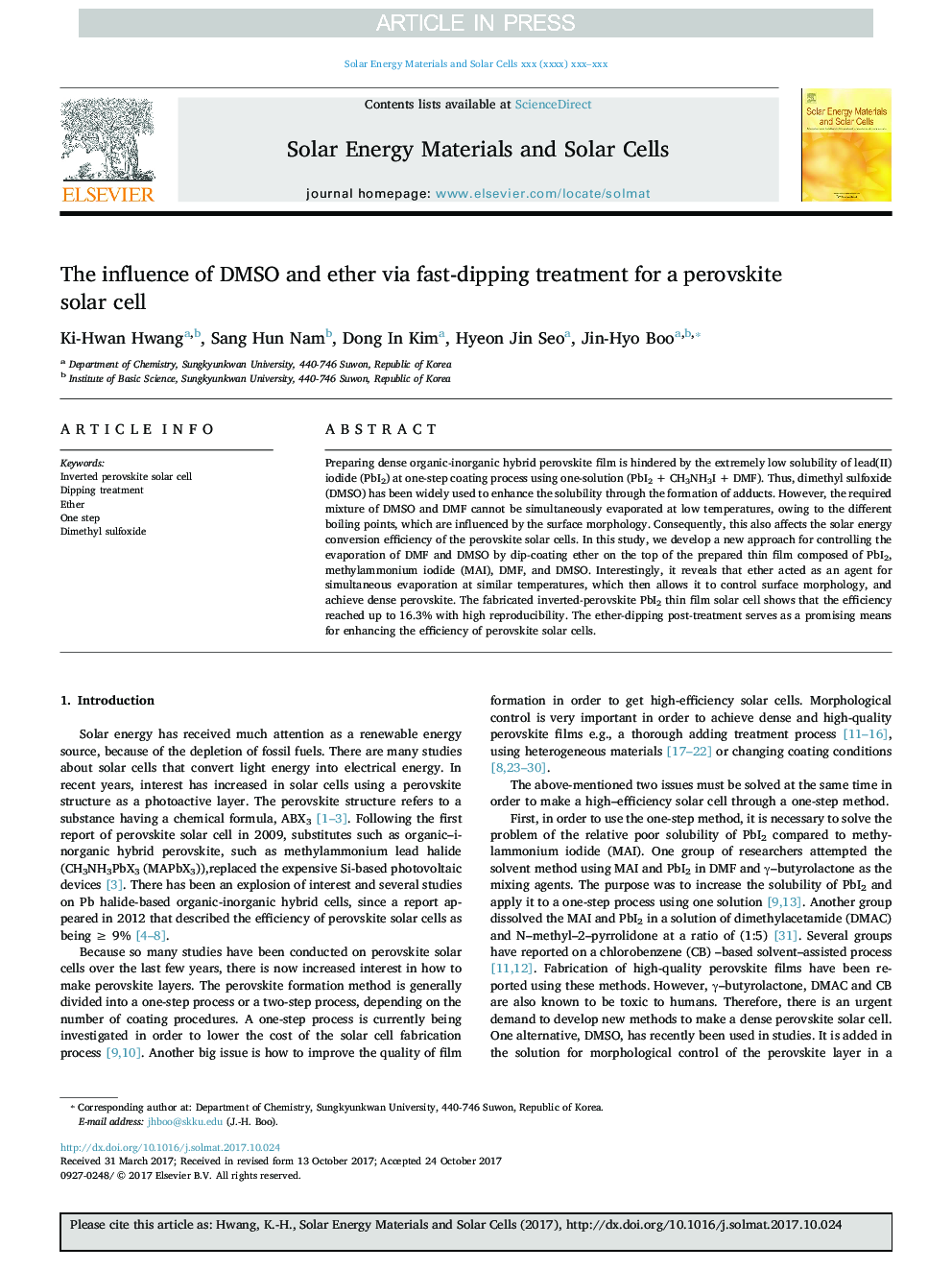| Article ID | Journal | Published Year | Pages | File Type |
|---|---|---|---|---|
| 6534245 | Solar Energy Materials and Solar Cells | 2018 | 10 Pages |
Abstract
Preparing dense organic-inorganic hybrid perovskite film is hindered by the extremely low solubility of lead(II) iodide (PbI2) at one-step coating process using one-solution (PbI2 + CH3NH3I + DMF). Thus, dimethyl sulfoxide (DMSO) has been widely used to enhance the solubility through the formation of adducts. However, the required mixture of DMSO and DMF cannot be simultaneously evaporated at low temperatures, owing to the different boiling points, which are influenced by the surface morphology. Consequently, this also affects the solar energy conversion efficiency of the perovskite solar cells. In this study, we develop a new approach for controlling the evaporation of DMF and DMSO by dip-coating ether on the top of the prepared thin film composed of PbI2, methylammonium iodide (MAI), DMF, and DMSO. Interestingly, it reveals that ether acted as an agent for simultaneous evaporation at similar temperatures, which then allows it to control surface morphology, and achieve dense perovskite. The fabricated inverted-perovskite PbI2 thin film solar cell shows that the efficiency reached up to 16.3% with high reproducibility. The ether-dipping post-treatment serves as a promising means for enhancing the efficiency of perovskite solar cells.
Keywords
Related Topics
Physical Sciences and Engineering
Chemical Engineering
Catalysis
Authors
Ki-Hwan Hwang, Sang Hun Nam, Dong In Kim, Hyeon Jin Seo, Jin-Hyo Boo,
